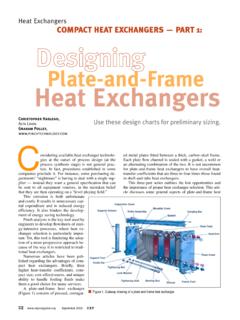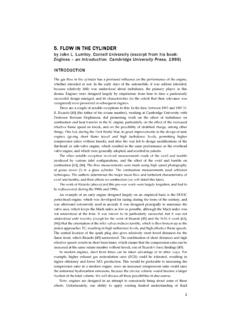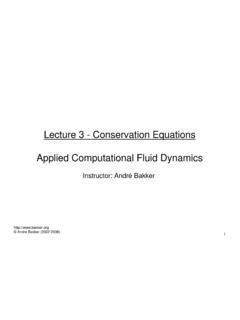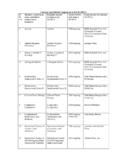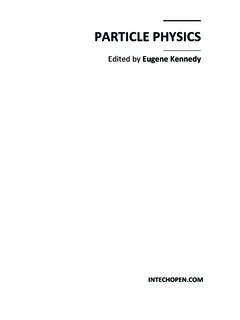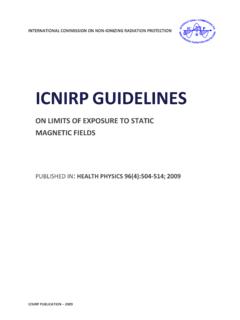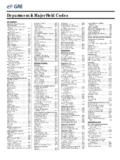Transcription of Fundamental Quantum Mechanics for Engineers
1 Fundamental Quantum Mechanics for EngineersLeon van Dommelen5/5/07 Version beta my parentsiiiivPrefaceWhy Another Book on Quantum Mechanics ?This document was written because of the recognition that with current emphasis on nan-otechnology, Quantum Mechanics is becoming increasingly essential to mechanical engineeringstudents. Yet, the typical Quantum Mechanics texts for physicsstudents are not written ina style that mechanical engineering students would likely feel comfortable with. Also, thecoverage often does not seem to be intended to emphasize understanding of the larger-scalequantum system that a density functional computation, say, would be used for. Hence thisdocument, written by a mechanical engineering professor for mechanical initial goal was to write something that would read like a mystery novel. Somethinga reader would not be able to put down until she had finished it.
2 Obviously, this goal wasunrealistic. I am far from a professional writer, and this is Quantum Mechanics , after all, nota murder mystery. But I have been told that this book is very well written, so maybe thereis something to be said for aiming prevent the reader from getting bogged down in mathematical details, I mostly avoidnontrivial derivations in the text. Instead I have put the outlines of these derivations in notesat the end of this document: personally, I enjoy checking the correctness of the mathematicalexposition, and I would not want to rob my students of the opportunity to do so typical physics texts jump back and forward from issue to issue, I thought that wouldjust be distracting for my audience. Instead, I try to follow a consistent approach, with ascentral theme the method of separation-of-variables, a method that most mechanical graduatestudents have seen before.
3 To cut down on the issues to be mentallyabsorbed at any giventime, I purposely avoid bringing up new issues until I really need them. Such a just-in-timelearning approach also immediately answers the question why the new issue is relevant, andhow it fits into the grand scheme of desire to keep it straightforward is the main reason that topics such as Clebsch-Gordancoefficients (except for the unavoidable introduction of singlet and triplet states) and Paulispin matrices have been shoved out of the way to a final chapter. Myfeeling is, if I can givevmy students a solid understanding of the basics of Quantum Mechanics , they should be in agood position to learn more about individual issues by themselves when they need them. Onthe other hand, if they feel completely lost in all the differentdetails of Quantum Mechanics ,they are not likely to learn the basics also try to go slow on the more abstract vector notation permeating Quantum Mechanics ,usually phrasing such issues in terms of a specific basis.
4 Abstract notation may seem to becompletely general and beautiful to a mathematician, but I do not think it is going to beintuitive to a typical I derive the first Quantum eigenfunctions, for a pipe and forthe harmonic oscillator, Imake sure to emphasize that they are notsupposedto look like anything that we told thembefore. It is only natural for students to want to relate what we told them before about themotion to the completely different story we are telling them now. So it should be clarifiedthat (1) no, they are not going crazy, and (2) yes, we will eventually explain how what theylearned before fits into the grand scheme of difference of approach in this book is the way it treats classical physics conceptsthat the students are likely unaware about, such as canonical momentum, magnetic dipolemoments, Larmor precession, and Maxwell s equations.
5 They are largely derived in quantumterms, with no appeal to classical physics. I see no need to rub in thestudent s lack ofknowledge of specialized areas of classical physics if a satisfactory Quantum derivation isreadily book is not intended to be an exercise in mathematical skills. Review questions aretargeted towards understanding the ideas, with the mathematics as simple as possible. I alsotry to keep the mathematics in successive questions uniform, to reduce the algebraic , this document faces the very real conceptual problems of Quantum Mechanics head-on, including the collapse of the wave function, the indeterminacy, the nonlocality, and thesymmetrization requirements. The usual approach, and the way Iwas taught Quantum me-chanics, is to shove all these problems under the table in favor of a good sounding, but uponexamination self-contradictory and superficial story.
6 Such superficiality put me off solidlywhen they taught me Quantum Mechanics , culminating in the unforgettable moment whenthe professor told us, seriously, that the wave functionhadto be symmetric with respect toexchange of bosonsbecausethey are all truly the same, and then, when I was popping myeyes back in, continued to tell us that the wave function isnotsymmetric when fermions areexchanged, which are all truly the same. I would not do the same to my own students. And Ireally do not see this professor as an exception. Other introductions to the ideas of quantummechanics that I have seen left me similarly unhappy on this point. One thing that reallybugs me, none had a solid discussion of the many worlds interpretation. This is obviously notbecause the results would be incorrect, (they have not been contradicted for half a century,)but simply because the teachers just do not like these results.
7 I do not like the results myself,but basing teaching on what the teacher wouldliketo be true rather on what the evidenceviindicatesistrue remains absolutely unacceptable in my document is mostly based on my reading of the excellent book by Griffiths, [3]. It includesa concise summary of the material of Griffith s chapters 1-5 (about 250 pages), written bysomeone who is learning the material himself at the same to my surprise, I find that my coverage actually tends tobe closer to Yariv s book,[6]. I still think Griffiths is more readable for an engineer , though Yariv has some itemsGriffiths does many-worlds discussion is based on Everett s exposition, [1]. It is brilliant but other parts of this document are taken from Feynman s notes, [2], a hard to read it is hard to determine the precise statements being made, much of that has beenaugmented by data from web sources, mainly those nanomaterials lectures of colleague Anter El-Azab that I audited inspired me to add abit on simple Quantum confinement to the first system studied, the particle in the box.
8 Thatdoes add a bit to a section that I wanted to keep as simple as possible, but then I figure it alsoadds a sense that this is really relevant stuff for future Engineers . I also added a discussion ofthe effects of confinement on the density of states to the section on the free electron and FeedbackIf you find an error, please let me know. The same if you find points that are unclear tothe intended readership, ME graduate students with a typical exposure to mathematics andphysics, or equivalent. General editorial comments are also welcome. I ll skip the philosophicaldiscussions. I am an can be e-mailed to me at is a living document. I am still adding some things here andthere, and fixing variousmistakes and doubtful phrasing. Even before every comma is perfect, I think the documentcan be of value to people looking for an easy to read introduction to Quantum Mechanics ata calculus level.
9 So I am treating it as software, with version numbers indicating the level ofconfidence I have in it The first version of this manuscript was posted Oct 24, 2004. A revised version was posted Nov 27, 2004, fixing a major blunder related to a nastyproblem in using classical spring potentials for more than a single particle. The fix re-quired extensive changes. This version also added descriptions of how the wave functionof larger systems is formed. A revised version was posted on May 4, 2005. I finally read the paperby Everett, III onthe many worlds interpretation, and realized that I had to take the crap out of prettymuch all my discussions. I also rewrote everything to try to make iteasier to follow. Iadded the motion of wave packets to the discussion and expanded the one on Newtonianmotion. May 11 2005. I got cold feet on immediately jumping into separation of variables, so Iadded a section on a particle in a pipe.
10 Mid Feb, 2006. A new version was posted. Main differences are correction of a numberof errors and improved descriptions of the free electron and band spectra. There is alsoa rewrite of the many worlds interpretation to be clearer andless preachy. Mid April, 2006. Various minor fixes. Also I changed the format fromthe article tothe book style. Mid Jan, 2007. Added sections on confinement and density of states, acommutatorreference, a section on unsteady perturbed two state systems, and an advanced chapteron angular momentum, the Dirac equation, the electromagnetic field, and NMR. Fixeda dubious phrasing about the Dirac equation and other minor changes. Mid Feb 2007. There are now lists of key points and review questions for chapter are in the new solution manual. 4/2 2007. There are now lists of key points and review questionsfor chapter 2.
